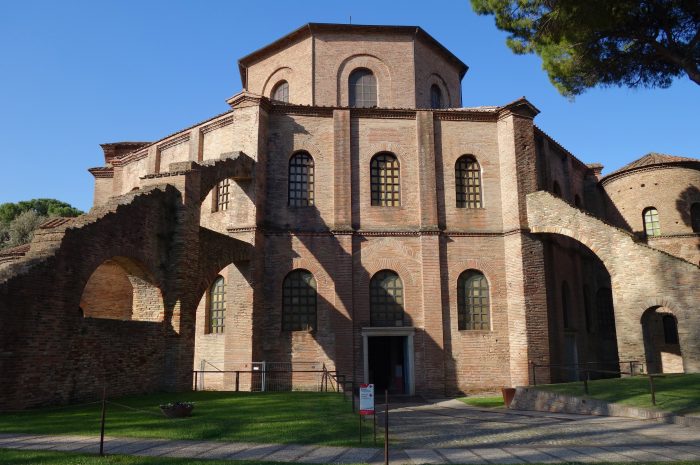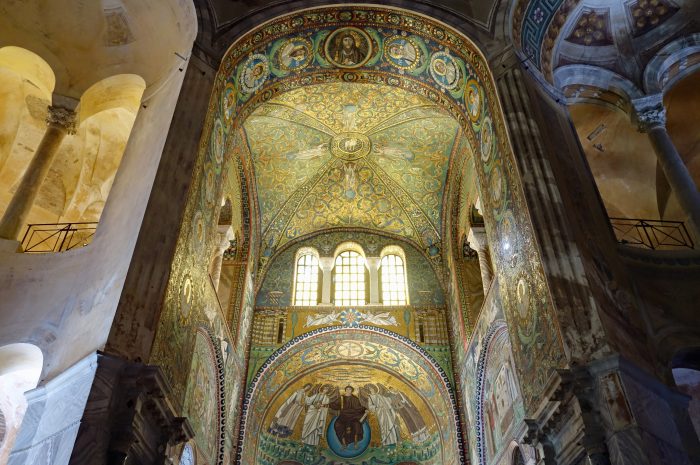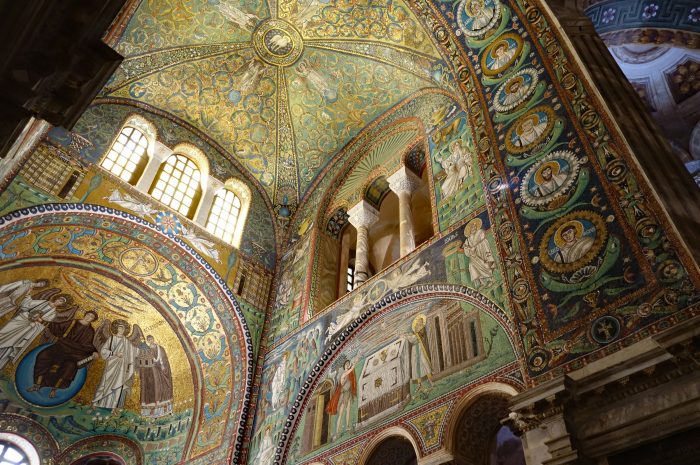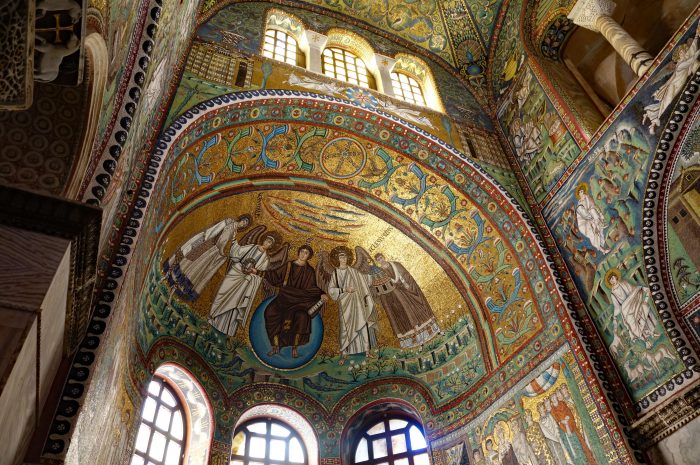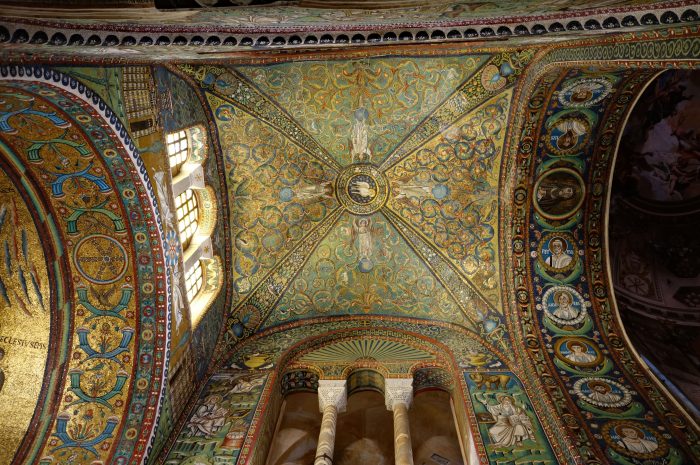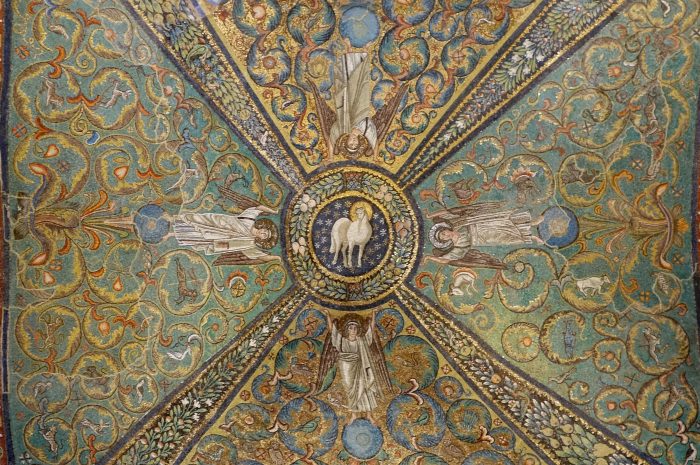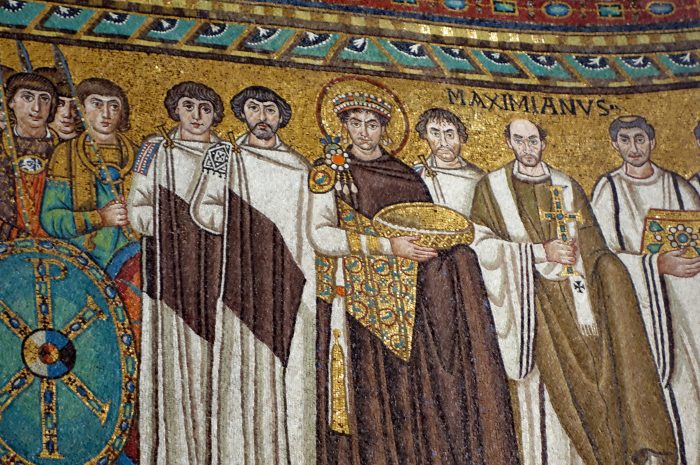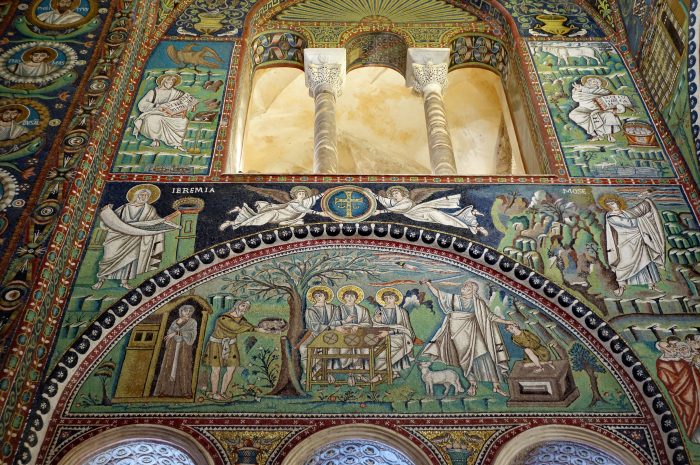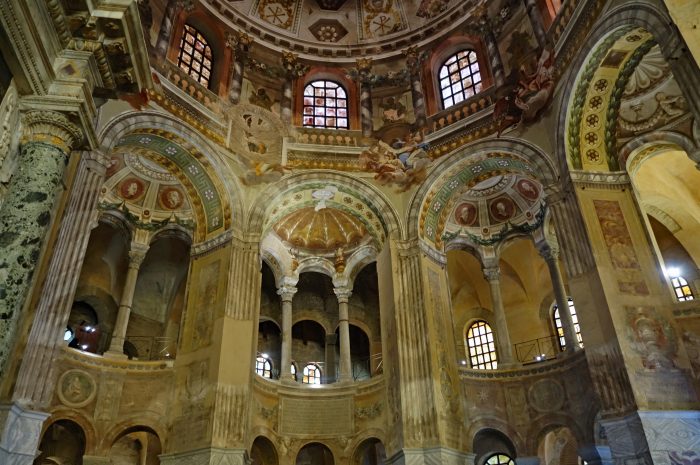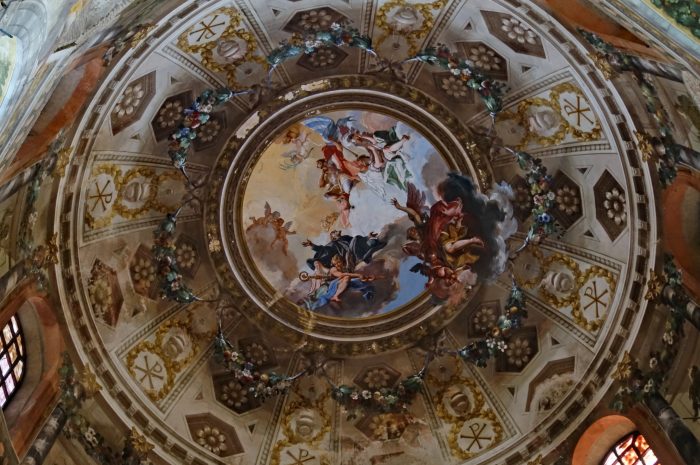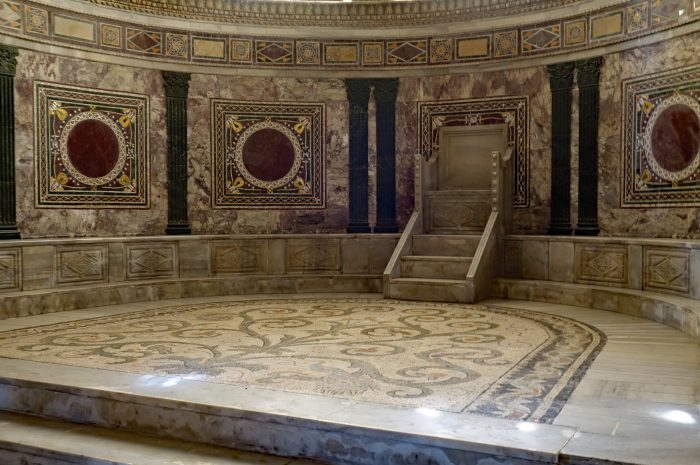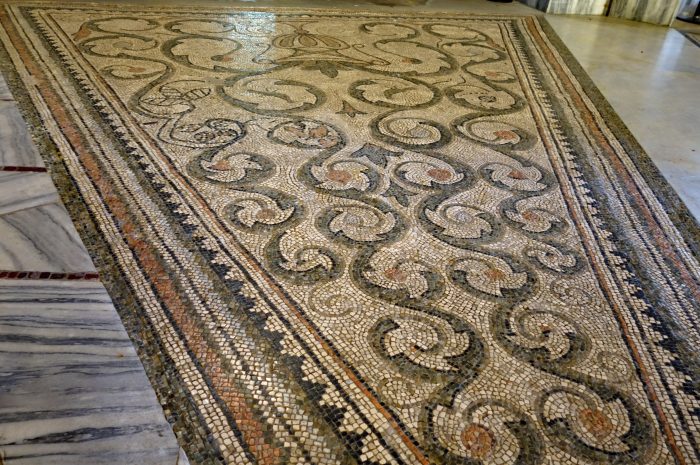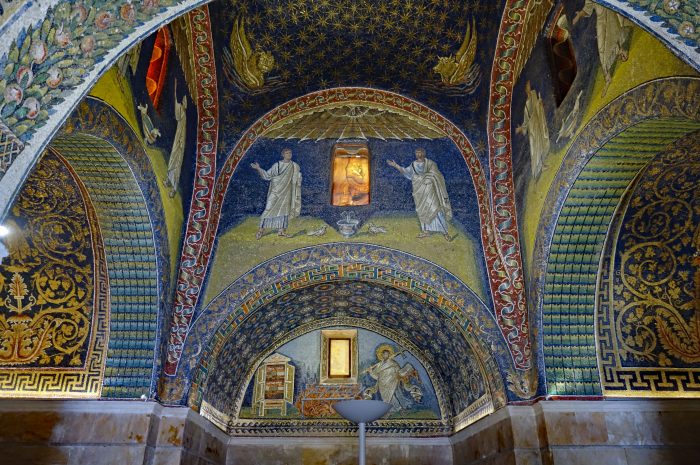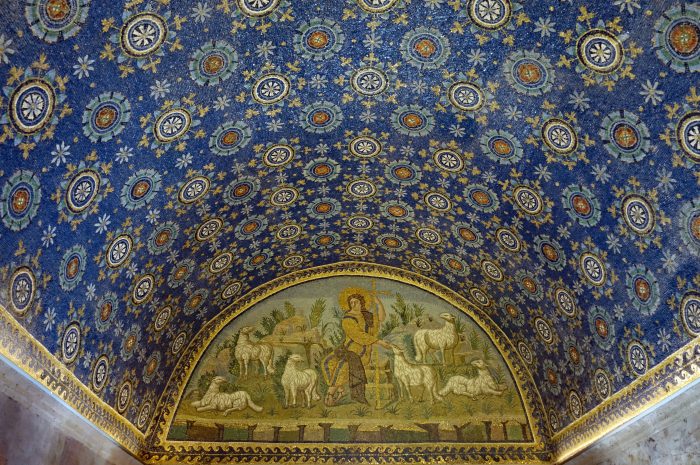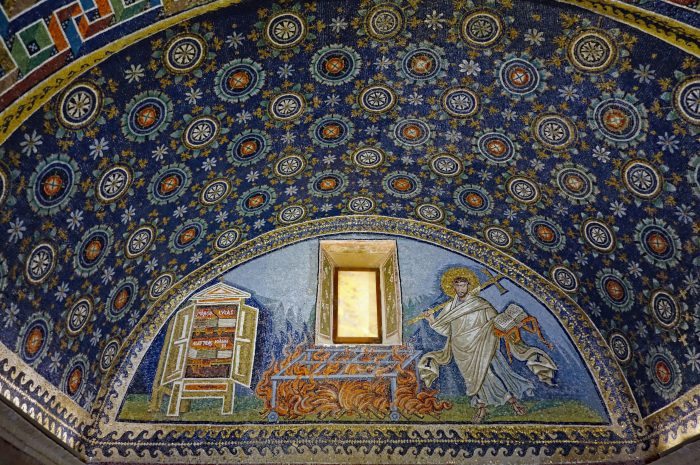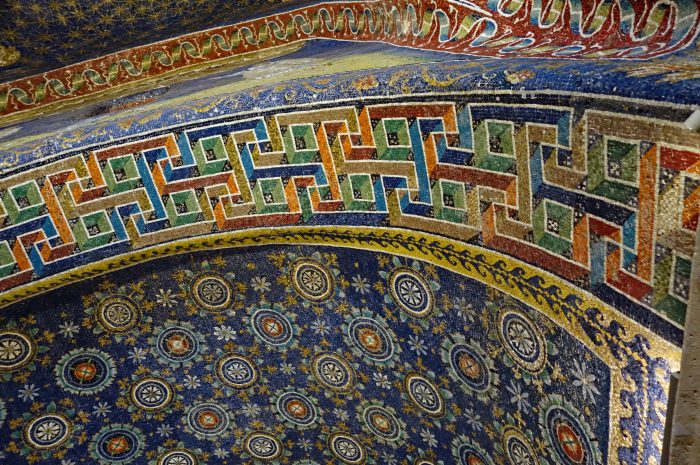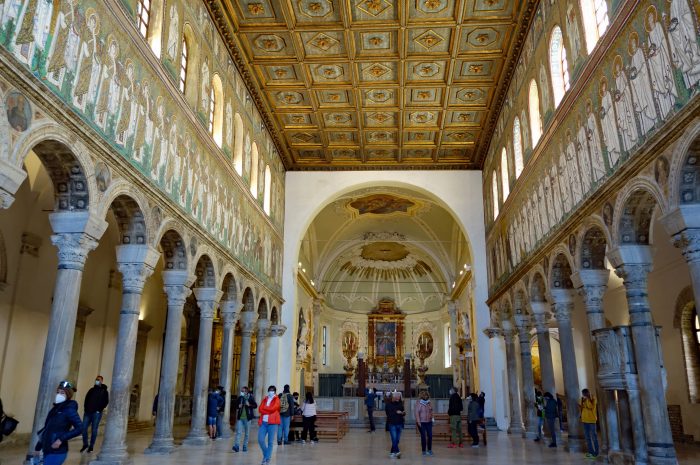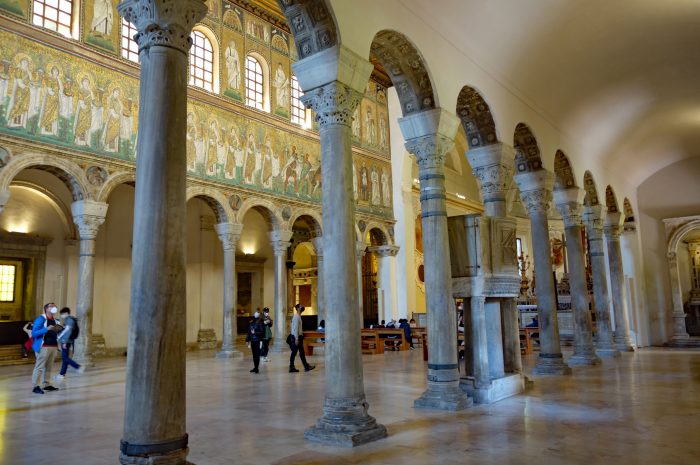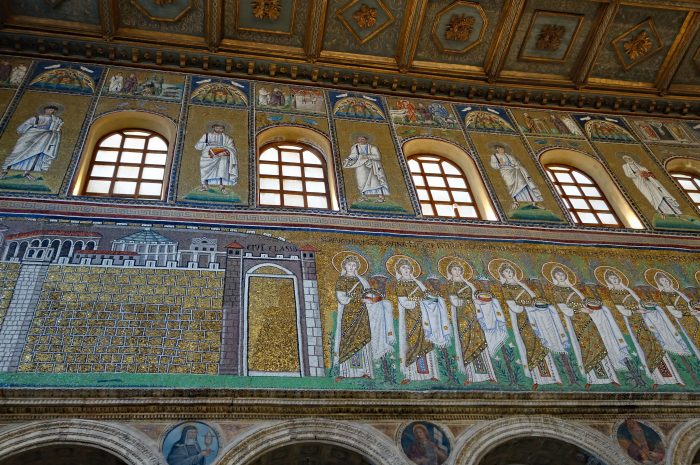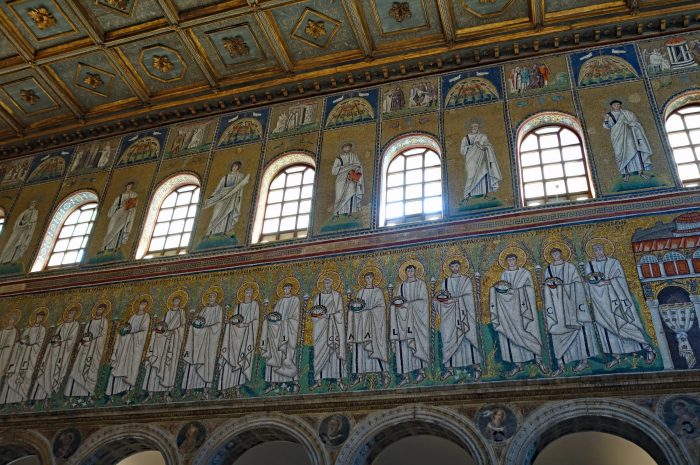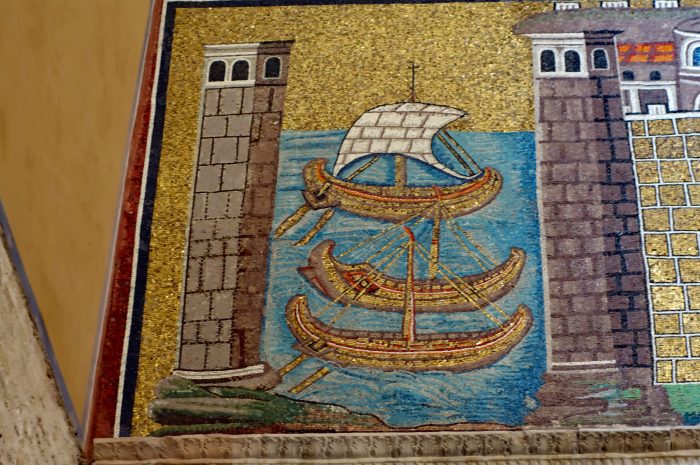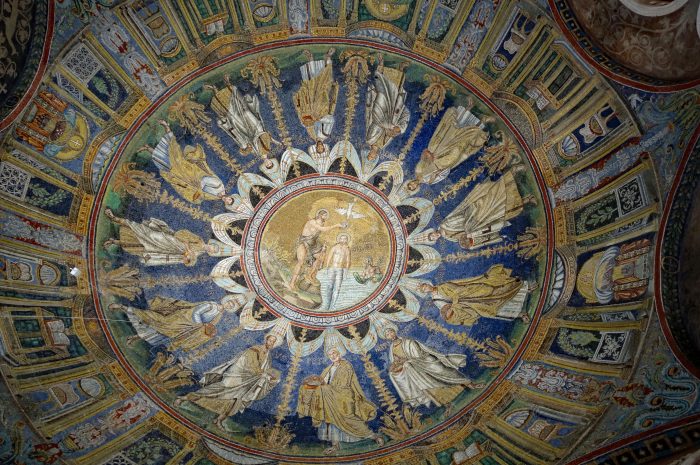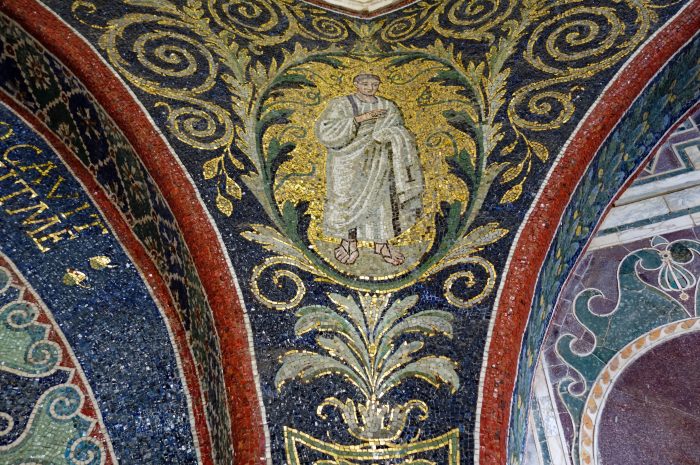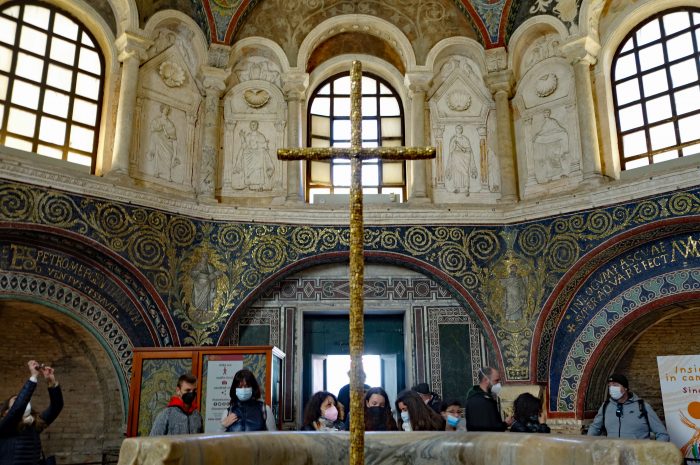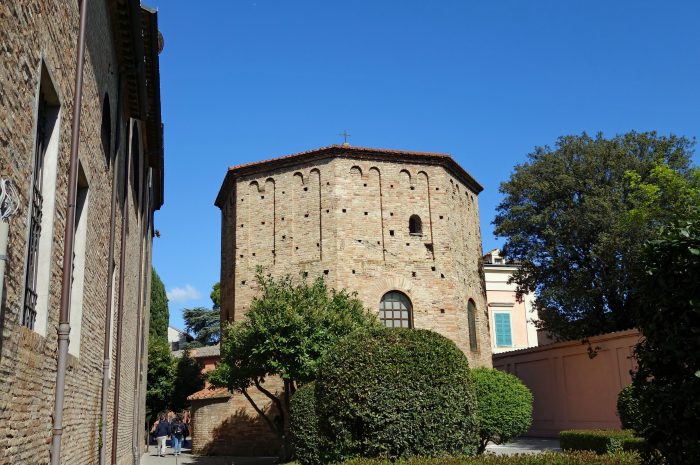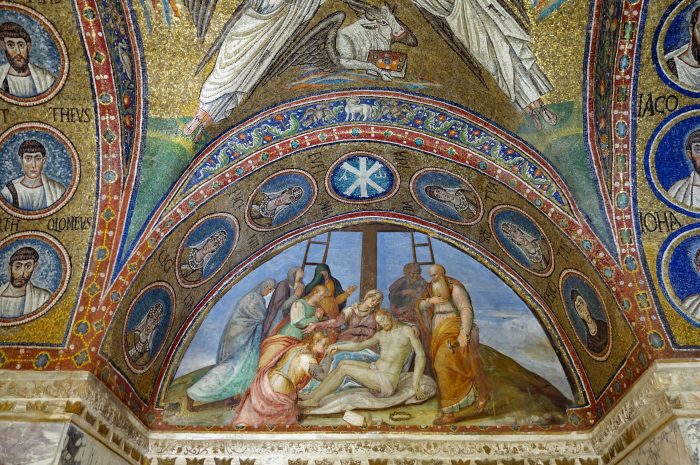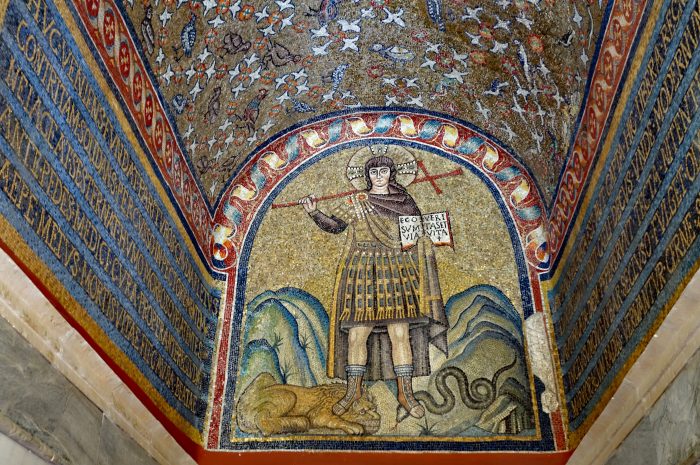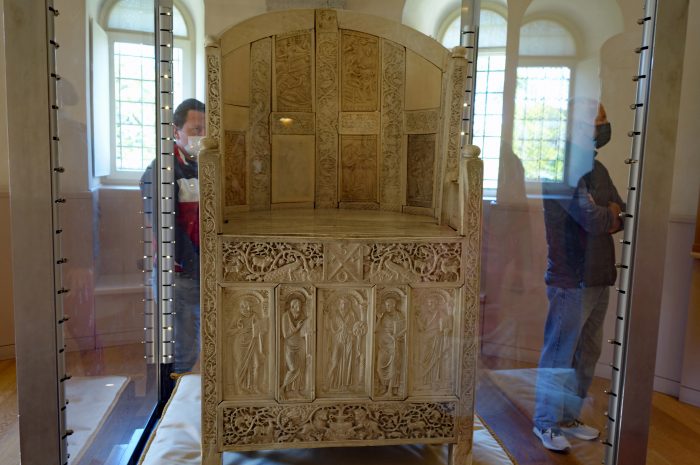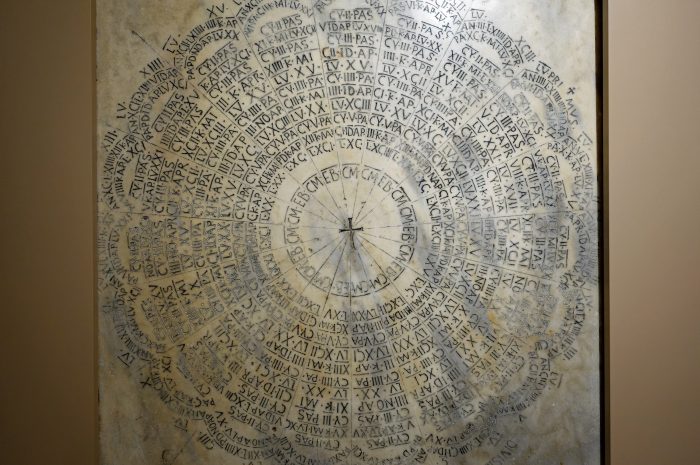
Ravenna is a small, historic town in the Emilia-Romagna region of Italy. Close to the Adriatic Sea, the town can trace its history back more than 2,000 years. During the 1st century AD, while ruled by the Romans, Ravenna enjoyed a prosperous time before being occupied by a succession of other rulers, notably the Ostrogoths and Byzantines. Each ruler left their mark, much of which can be seen today, which explains why Ravenna has no less than eight UNESCO World Heritage Sites. A large part of the city center is a pedestrian zone where most of the major sites are located, especially the famous Ravenna mosaics which was what brought us here.
We got an early start on our first day, a good idea these days as tourist numbers are increasing everywhere we go. Arriving at the tourist office near the Basilica di San Vitale at 9 am we bought tickets giving us access to five of the eight UNESCO sites over a 7-day period. The tickets cost 12.50 Euros (USD $13.60) each, which in my opinion is a bargain for the locations that are included. Fortunately, we were first in line and the ticket seller booked entry times for us at two of the sites, which we were unaware we needed to do, so keep this in mind if you plan on visiting.
Our first visit was to the 6th-century Basilica di San Vitale, one of the most treasured examples of early Christian and Byzantine art in Western Europe, and in our opinion the best site in Ravenna. The towering columns and rich, vividly colored mosaics inside the basilica are jaw-dropping. The extraordinary mosaic decorations on the apse depict the Byzantine imperial couple, Justinian and Theodora. I swear I walked around the entire time with my mouth open in awe of the most beautiful mosaics I have ever seen. This site must be very popular during the busy season with your time inside limited to 25 minutes! There is a lot going on inside the basilica and this website has loads of information about the history, design, and significant works inside. It’s way too much for me to repeat here but certainly worth reading about. It’s incredible when you consider how much effort it took to create these masterpieces using minuscule, colored tiles…think about it…millions of minuscule little tiles!!! And the detail they achieved is mind-boggling. Then there are the frescoes and the mosaic floors, oh my, what a place!!
Right next to the basilica is the Mausoleo di Galla Placidia. This small mausoleum was built in the 5th century for Galla Placidia, the sister of a Roman Emperor. It was never used by the Empress, who died in 450 and was buried in Rome. UNESCO describes this mausoleum as one of the best-preserved mosaic monuments, containing the oldest mosaics in Ravenna. As you enter, you’re greeted by a rich blue ceiling with countless glittering gold stars. The intricate mosaics, stunning depictions, and striking colors in the mausoleum are jaw-droppingly gorgeous. These first two sites are definitely the highlights of Ravenna, but you have to be quick, you are only allowed in the mausoleum for 5 minutes!
Third on the list was the Basilica di Sant’Apollinare Nuovo, originally an Arian-palatine church. Named for Ravenna’s first bishop, it is famous for its two side walls full of mosaics dating from 500 to 560 AD. This extraordinary mosaic decoration runs through the entire central nave. The 26 Christological scenes, dating back to the rule of Theodoric, are the largest most ancient mosaic works dedicated to the New Testament.
Next was the octagonal-shaped Battistero Neoniano built by the bishop Orso in the 5th century, but the mosaics were added 50 years later by the bishop Neon. The magnificent mosaic in the dome has a central scene of St. John the Baptist baptizing Jesus, surrounded by a procession of the 12 Apostles. In the center is an eight-sided baptismal font made in the 16th century from Greek marble, the unique feature of which is the pulpit, carved from a single piece of marble. This location also limits your visiting time to 5 minutes.
Lastly, we toured the Bishops Palace Museum which contains the Chapel of Sant Andrea. This gem was the private chapel of the bishops of Ravenna and was decorated with mosaics from 494 to 519. It is the only existing archiepiscopal chapel of Early-Christian period that has been preserved intact to the present day. The vestibule is covered by a golden mosaic sky with 99 species of birds, some typical of the area. The museum itself has a variety of ancient artifacts including the Ivory Throne of the bishop Maximian from the 6th century. The rarest and most significant item in the museum is the Paschal Calendar. Engraved on a slab of marble the calendar was made for the purpose of determining the date on which to celebrate Easter from AD 532 to AD 626, simply amazing!
There are many other monuments and museums around the city but it can get overwhelming to see too much all at once. We thoroughly enjoyed the sites we visited plus spent a couple of afternoons just wandering about the city center and having drinks in Piazza del Popolo. Not much can beat sitting in an Italian piazza in the sunshine having a refreshing drink 😊
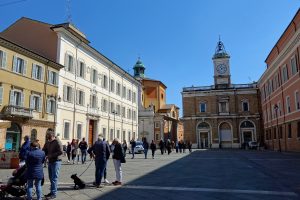
If you have never been to Ravenna I recommend visiting for a couple of days to admire the stunning mosaics here, it’s hard to describe how amazing they are, they will take your breath away. We saw the top 5 sites in less than a day giving us time to wander the city randomly to see what we came across. It also left us with a day to spare so we popped into another country, more on that in the next post…..
Trip Tips
Here is a link to the online ticketing service that may be useful if you plan to visit during the busy tourist season. We were lucky to get into all five monuments in one day without pre-booking, in mid-April mind you.
